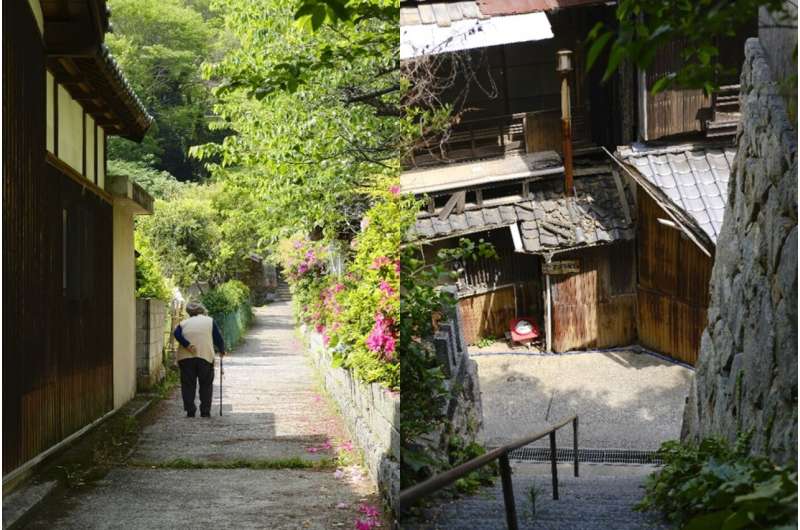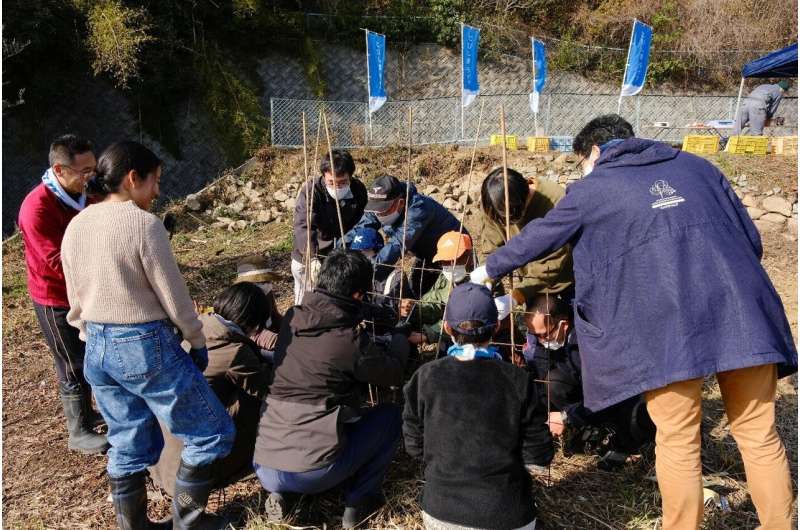This article has been reviewed according to Science X's editorial process and policies. Editors have highlighted the following attributes while ensuring the content's credibility:
fact-checked
trusted source
proofread
15 years on, researchers assess the impact and lessons Japan's rural movement initiative offers

More than half of the world's population lives in urban areas, a trend that's expected to expand in coming years, according to the United Nations. The urbanization movement is especially stark in Japan, where only 8% of the country's population lives in rural areas.
Japan also has one of the oldest populations in the world, with almost 30% of its residents aged 65 years or older. And many of the older citizens remain in rural areas, which led the country to establish the Local Revitalization Cooperator (LRC) initiative in an effort to attract younger people to these areas.
Known as "chiiki okoshi kyouryoukutai," the LRC promises three years of housing and a salary to entice younger people to not only move to the countryside, but also contribute to local revitalization using their specific skills and interests. For example, an entrepreneurial participant may find that their new home lacks any restaurants or community gathering spaces.
By establishing a restaurant, residents have a new place to gather and outsiders a new place to visit, which contributes to bringing wealth and potential visitors into the community.
Now, 15 years since the LRC was established, a team of researchers based in Japan has assessed how the intention of the initiative measures against its impact. They published their findings in Habitat International.
"While the world on average is becoming increasingly urban, rural and remote communities worldwide are suffering from issues connected to outmigration, depopulation and aging, which threatens the socio-economic viability of rural communities but also the services rural areas provide in terms of food security, environmental and landscape conservation, and the preservation of cultural values," said corresponding author Simona Zollet, assistant professor at Hiroshima University's Graduate School of Humanities and Social Sciences.
"In this paper, we set out to examine the practical application of policies aiming at attracting newcomers to rural communities."
Co-author Meng Qu, associate professor at Hokkaido University's Center for Advanced Tourism Studies, explained that they focused on the Japanese context because the country saw some of the earliest manifestations of these issues, and lessons learned may have potential applications in other countries.

"Given the global nature of rural shrinkage and decline, examining the mechanisms and outcomes of a revitalization-oriented policy instrument in the Japanese context can offer useful insights into research and policy directions aimed at supporting the vitality of rural communities elsewhere," Qu said.
The team analyzed the current scientific literature focused on rural in-migration, or migration from urban to rural areas within a country, policy guidelines and the nationally maintained statistics related to population changes. They also conducted interviews with LRC participants and made field observations over seven years.
When the country launched the LRC initiative in 2009, 89 participants operated in 31 municipalities. By March of 2022, 6,447 participants operated in 1,118 municipalities. The government aims to increase active membership to 10,000 by 2026. About 65% of participants remained in the rural area once their LRC commitment concluded, a statistic that has remained steady throughout the program.
Many of them started their own businesses, as intended by the LRC initiative, but several noted the communities' lack of facilities and services, such as adequate schools or access to health care, had left them uncertain if they planned to remain in the long term.
"Although the reach of the LRC program is responsible for a small fraction of the people relocating from urban to rural areas in Japan, the policy implications of the initiative are noteworthy, as it is one of the only examples in the world of a longstanding national-level policy promoting rural revitalization by supporting the settlement of people interested in living and working in rural areas," Zollet said.
"The initiative also allows people to move to rural areas while harnessing their skills for the benefit of local communities and promotes newcomers' long-term settlement, thus potentially contributing, over time, to creating a more sustainable demographic profile in the local population and to retaining essential services, such as schools."
However, Zollet noted, current national policies also promote decentralization and budget cuts to peripheral rural areas — which means these areas are left unable to address structural problems related to basic services and infrastructure.

"Therefore, attracting new population should be seen only as one aspect of more holistic regional revitalization policies," Zollet said.
The researchers also highlighted that the LRC initiative is relatively young, so to understand the full potential impacts, it must be monitored for longer.
"At the same time, it is also necessary to define which elements are most important to evaluate its outcomes," Qu said. "Is it the social contribution towards the local community? The capacity of LRC members to successfully start new businesses? Or even simply the long-term settlement of newcomers in the community?"
To better understand the extent to which this policy might be adapted to other regions, the authors are participating in a Knowledge Frontiers 2024 project called "INTANGIBLE: Understanding the socio-cultural dimensions of island population change in Scotland, England, Canada and Japan," an international study focused on remote island communities and with many connections to rural in-migration.
Ruth Wilson, a social scientist with the James Hutton Institute in Scotland, is leading the project.
"Despite cultural, social and economic differences, other places affected by rural depopulation will benefit from testing strategies directed at supporting rural newcomers and their integration into the local community as part of a more holistic approach to rural revitalization focused on quality of life," Zollet said.
More information: Simona Zollet et al, Revitalising rural areas through counterurbanisation: Community-oriented policies for the settlement of urban newcomers, Habitat International (2024). DOI: 10.1016/j.habitatint.2024.103022
Provided by Hiroshima University




















